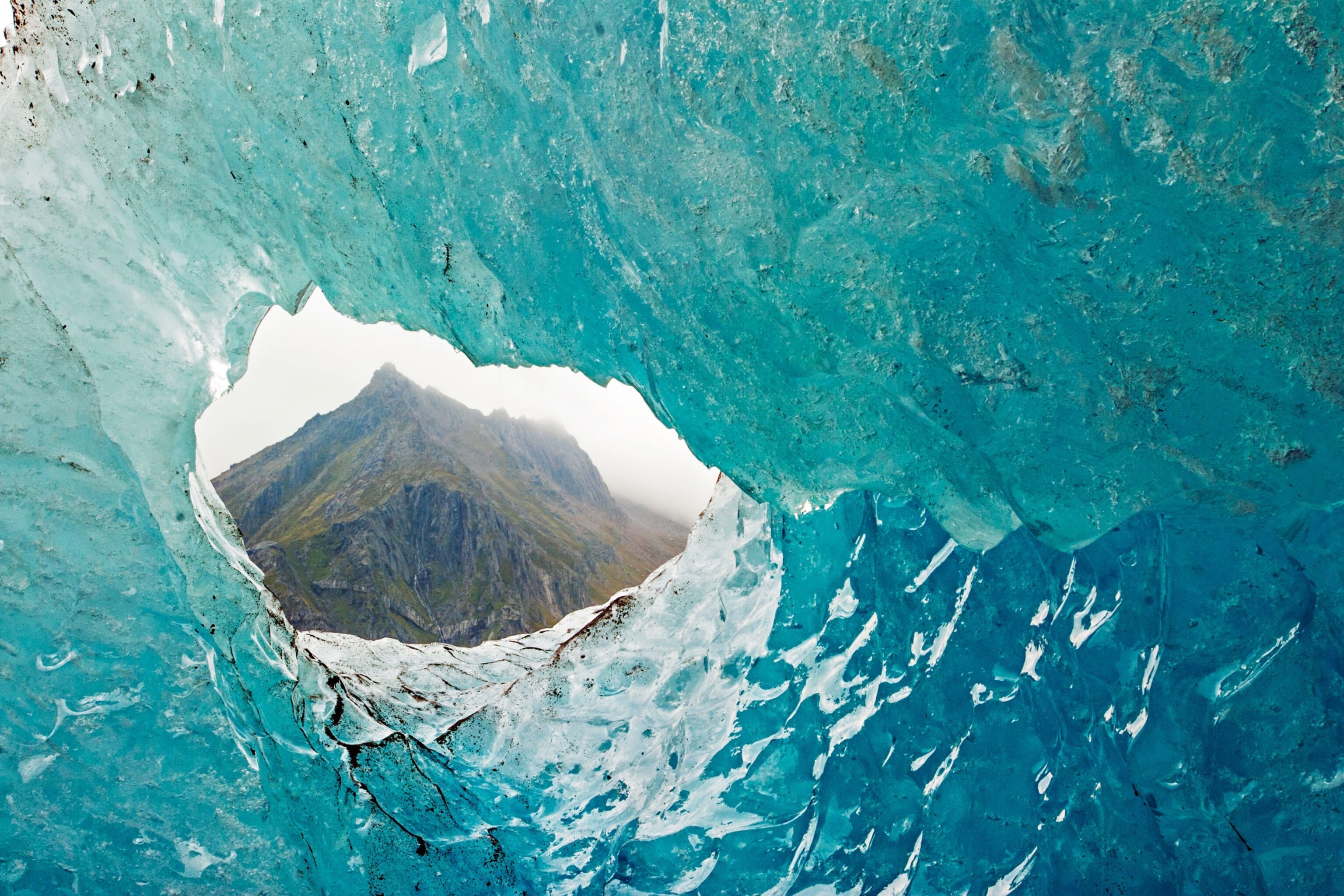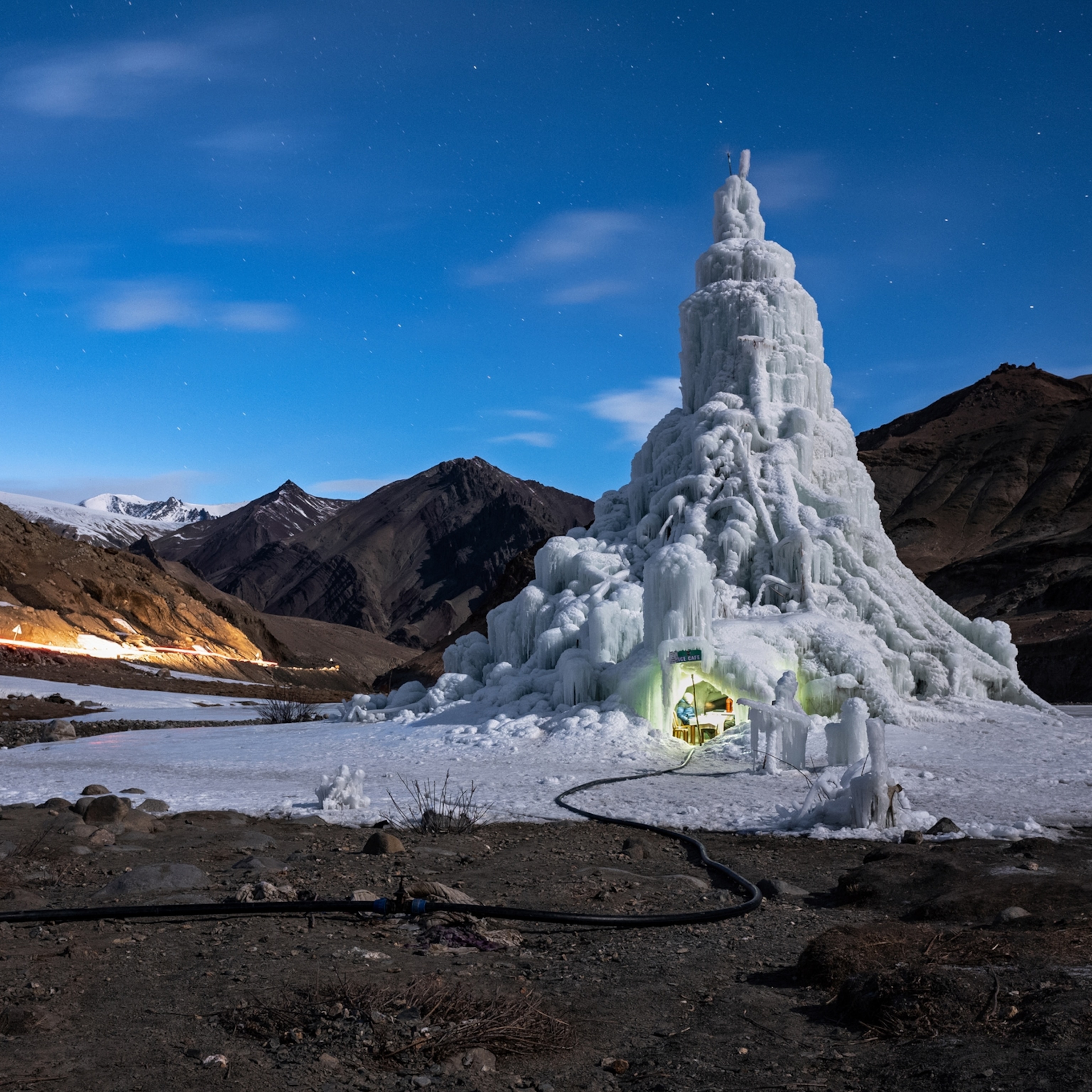
Seven Nat Geo Photographers on Witnessing Climate Change
This month, as National Geographic’s climate change issueNational Geographic’s climate change issue hits the stands, we asked seven photographers to share their most poignant images that reflect climate change. From direct examples to more tangential manifestations, we were interested in seeing how climate change was visible in the work they do.
Here, they share stories of retreating ice, flooded landscapes, and the human toll of a warming planet—using photography, as Lynn Johnson writes, “to inform my neighbors in the hope the images motivate change.” —Jessie Wender, Senior Photo Editor

It is difficult to visualize how climate change is affecting our environment, especially in the Arctic sea-ice regions, because melting still happens slowly with large yearly fluctuations. However, small changes add up to huge alterations over time. This is particularly dramatic on land, and in the case of the glaciers. Glaciers are relatively small compared to ice caps and are therefore good indicators of climate change. The photograph above is of the Norwegian Engabreen Glacier in 2006. When I returned six years later in 2012, there was no ice. From the time I made this first image, the ice had retreated more than 150 meters. —Orsolya Haarberg

My long-term project dealing with the life of small communities threatened by climate change, from Kiribati to Alaska and Greenland, asks the question, “How do I photograph climate change?” I’ve found the best way to do it is through personal stories. In April, I took a helicopter to the tiny village of Nuugatsiaq, Greenland, home to about 60 people. The village lies at the end of Umiamako, the fastest melting glacier on the Uummannaq fjord.
Here, the Street Larsen family was my host for the week. The village school had only seven students and was closed for the week I was there, and the children spent this time at home, playing video games and guitar. A moment came when Anguteq lifted himself up on a bar hanging from the ceiling and let the sound of music flow through him. I contemplated his life ten years in the future, as well as that of his home village, where life is changing rapidly and many young people are departing for cities, leaving the traditional lifestyle behind them. —Ciril Jazbec
(Jazbec photographed the story “How Melting Ice Changes One Country’s Way of Life” in this month’s issue.)

We slept at 20,000 feet, acclimatizing for an Everest ascent, when I took this frame as part of an all-night time-lapse. It was the same year that (just as predicted) a massive 31-million-pound block of ice smashed onto the climbing route, killing 16 Nepali high-altitude workers carrying loads for the commercial guiding season. It’s well known that climate change is a major contributing factor for the increasing dangers of such a glaciated region. What’s not as well publicized is the proportionally greater risk it places on these Nepali workers who enable all the ascents up to Earth’s highest point. —Renan Ozturk

During king tide at Miami Beach, the water comes up through the drainage system and into the street, over the poorly maintained seawall at Indian Creek. In this photograph, workers are checking to see if the drainage system is blocked. Because it is built on limestone, it’s believed that Miami Beach and the bay area will need to be evacuated by 2060.
Being Dutch, I grew up with water and the fear of it, very aware that for the most part we live below sea level and that disastrous flooding did and could happen. So for me, it was logical to embark on a project looking at the human consequences of rising seas. I worked in nine regions of the world for this project, and I am shocked at how urgent this whole matter has become. We don’t have to wait for the floods to come anymore; now land is becoming unlivable much earlier due to seawater intrusion—the soil becomes saline and the drinking water brackish. —Kadir Van Lohuizen
(Van Lohuizen photographed the story “Rising Seas Threaten These Pacific Islands but Not Their Culture” in this month’s issue.)

The coverage of retreating ice that I started in 2005 goes on. In south central Alaska, the main branch of the Columbia Glacier has retreated over 13 miles since 1980; in the past few years, the west branch, seen here in a pair from 2009 and June of this year, has retreated nearly three miles. My Extreme Ice Survey, now a project of my newly founded Earth Vision Institute, currently has 43 cameras watching 24 glaciers from the Arctic to the Antarctic. We are in the midst of extraordinary change in the world’s landscapes. —James Balog

Standing around for hours in the hot sun watching a group of botanists, the pictures just weren’t happening. Perched on metal walkways so they wouldn’t crush their subjects and with faces diminished by mosquito netting, all were hunched over to study what would seem the most trivial of things: Arctic tundra.
To tell you the truth, I was bored.
Knowing I wasn’t shooting anything, eventually a researcher looked up and slowly began to speak. “I know this doesn’t look like much,” she said, “but what we’re studying here is going to change the world in the most profound way.” She could tell I still didn’t get it and continued, urgently now. “Look, below our feet lie tons of frozen plants, some in layers hundreds of feet thick, accumulated over eons. When climate change melts the summer permafrost, the bacterial action on all that thawing organic material will release so much methane it’ll make all man-made emissions look trivial and change the planet’s climate virtually overnight. You think it’s hot now? Just you wait.” She turned and went back to her quiet work, methodically picking out the next plant in her grid transect.
I stared down at my camera, suddenly heavy in my hands. —Joel Sartore
(Sartore photographed the story “Some Species Will Actually Thrive on a Warming Planet” in this month’s issue.)

In Springdale, Pennsylvania, play is not without its dangers. Every time this child jumps, she gulps air containing sulfur dioxide and nitrogen oxides—chemicals linked with asthma attacks, lung and heart disease, and mercury, a neurotoxin, particularly damaging for developing bodies and brains.
Her ominous neighbor and source of the pollutants, the NRG coal-fired power plant, is ubiquitous in the landscape and so, ironically, nearly invisible. Chemical impregnated smoke is a significant cause of global warming.
Four Pittsburgh photographers working in the social-documentary tradition contributed to this project, called “In the Air.” It was supported by a grant from the Heinz Foundation, and I was honored to be a part of this group, using photography to inform my neighbors in the hope the images would motivate change. —Lynn Johnson
Visualizing climate change remains a challenging undertaking. To share your photographs and stories of climate change, join the National Geographic Your Shot community, and contribute to the #CoolIt hashtag challenge.
For a selection of previous National Geographic coverage, see George Steinmetz’s photographs of rising seas, Peter Essick’s coverage of the California drought, and Rob Kendrick’s coverage of coal dependency.
On Instagram, more climate change-related photographs can be seen by following the group @everydayclimatechange.
Related Topics
You May Also Like
Go Further
Animals
- Octopuses have a lot of secrets. Can you guess 8 of them?
- Animals
- Feature
Octopuses have a lot of secrets. Can you guess 8 of them? - This biologist and her rescue dog help protect bears in the AndesThis biologist and her rescue dog help protect bears in the Andes
- An octopus invited this writer into her tank—and her secret worldAn octopus invited this writer into her tank—and her secret world
- Peace-loving bonobos are more aggressive than we thoughtPeace-loving bonobos are more aggressive than we thought
Environment
- Listen to 30 years of climate change transformed into haunting musicListen to 30 years of climate change transformed into haunting music
- This ancient society tried to stop El Niño—with child sacrificeThis ancient society tried to stop El Niño—with child sacrifice
- U.S. plans to clean its drinking water. What does that mean?U.S. plans to clean its drinking water. What does that mean?
- Food systems: supporting the triangle of food security, Video Story
- Paid Content
Food systems: supporting the triangle of food security - Will we ever solve the mystery of the Mima mounds?Will we ever solve the mystery of the Mima mounds?
History & Culture
- Strange clues in a Maya temple reveal a fiery political dramaStrange clues in a Maya temple reveal a fiery political drama
- How technology is revealing secrets in these ancient scrollsHow technology is revealing secrets in these ancient scrolls
- Pilgrimages aren’t just spiritual anymore. They’re a workout.Pilgrimages aren’t just spiritual anymore. They’re a workout.
- This ancient society tried to stop El Niño—with child sacrificeThis ancient society tried to stop El Niño—with child sacrifice
- This ancient cure was just revived in a lab. Does it work?This ancient cure was just revived in a lab. Does it work?
Science
- The unexpected health benefits of Ozempic and MounjaroThe unexpected health benefits of Ozempic and Mounjaro
- Do you have an inner monologue? Here’s what it reveals about you.Do you have an inner monologue? Here’s what it reveals about you.
- Jupiter’s volcanic moon Io has been erupting for billions of yearsJupiter’s volcanic moon Io has been erupting for billions of years
- This 80-foot-long sea monster was the killer whale of its timeThis 80-foot-long sea monster was the killer whale of its time
Travel
- Spend a night at the museum at these 7 spots around the worldSpend a night at the museum at these 7 spots around the world
- How nanobreweries are shaking up Portland's beer sceneHow nanobreweries are shaking up Portland's beer scene
- How to plan an epic summer trip to a national parkHow to plan an epic summer trip to a national park
- This town is the Alps' first European Capital of CultureThis town is the Alps' first European Capital of Culture







